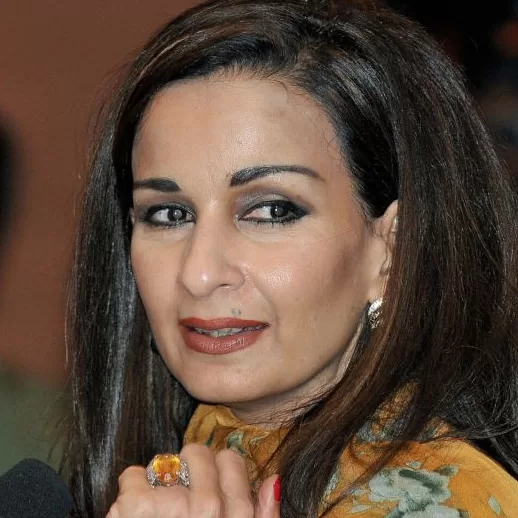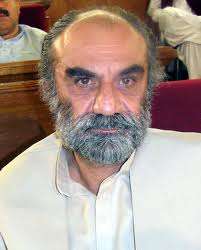Balochistan is under tremendous squeeze. Internal weaknesses have encouraged the external actors to play their provocative and disruptive role. From a behind the scene role covered under the smoke screen of denials, these actors have now picked up the courage to come to fore openly. Pakistan’s reaction has been quite appropriate. Two demarches’ to the American ambassador within a week would radiate amply strong message to others who are too prompt to kowtow American line on such issues. Ambassador Sherry Rehman needs to take charge of the situation and employ potent lobbyists, otherwise this campaign would snowball. Before long the issue would be raised in the House of Commons and later in the European Union etc.
War in Afghanistan is impacting the Balochistan situation in a number of ways. This war has facilitated several foreign actors to influence the developments in the region and complicate the issue. Nevertheless, internal scrutiny is in order, for external seize can only be blown off through a pressure created by the political will radiated in the form of national consensus. Point of concern is the inability of the democratic setup to rectify the situation for over four years, that too when same party governs the federation as well as the province.
Resource provision has not been an issue. A candid estimate has it that cumulative flow of development intended cash to the province during the last four years has been of the tune of eight billion rupees. This huge funding, at the cost of well being of the people of other provinces, does not show up in the form of projects; there is hardly any measureable change on the ground. Miseries of a common Baloch have not reduced. Policy of political appeasement has not been able to buy out calm in Balochistan. A province of 30 districts has around 60 minsters, each having annual development fund of Rupees 25 Crore. APC needs to find out the utilization of these funds. Love for money and the rot of political appeasement was amply visible during the passage of 20th constitutional amendment by our Senate that has cost the national exchequer Rupees 46 crore. Senators refused to vote for the amendment untill they were prepaid on the account of PDP I&II and their life time VIP status was notified.

Knowing how much out of development funds are actually spent by the majority of our legislators, it is too naive to think that pumping in of money through ministers/ MPAs of Balochistan would generate desired effects at the grass root. Around 70 percent hospitals in the province do not have staff and medicines while 70 percent schools have been closed down. In fact most of these very MPAs are the biggest hindrance to development of rural Balochistan. Publicly they present a different face and propagate the deprivation of a common Baloch; whereas privately they obstruct any meaningful attempt aimed at the well being of a common Baloch. Situation in Balochistan has come to such a pass due to faulty policies of successive governments, both civilian and military. For them, political expediencies and narrow legitimacy goals are the primary objectives; larger national interests are generally pushed to the back seat.
Unfortunately, we are still following the colonial model of administration in Balochistan. They used to purchase the title holders and notables; barter terms and conditions were complete internal autonomy to them in exchange for maintenance of ruthlessly effective law and order. Common Baloch never figured in colonial calculus; for local chieftains a commoner had only one role and one choice: to go along with the colonial design in exchange for his right to live. Not much has changed.
Even today, for the purpose of law and order, Balochistan is categorised into ‘A’ and ‘B’ areas. “A” area, 5% of total landmass, falls under the jurisdiction of police and FC. “B” area (remaining 95%) is under the levies. Levies are employed and equipped by tribal chieftains. Levies personnel are paid by the provincial government through respective chieftain. Through a bold decision by the previous government entire Balochistan was declared “A” area, but surprisingly the decision was reversed soon after the takeover of present Government, mainly to appease the tribal chiefs. Hence a common Baloch was handed back to the wolves. Since then the law and order in on a nose dive.
It is unfair to blame FC for all the woes of Balochistan, while it has partial jurisdiction over only 5 percent of the area. IGFC Balochistan has recently stressed for collective political efforts alongside socio-economic development to address the current precarious law and order situation. Although the present situation is largely a result of political vacuum, IGFC needs to take stock of the highhandedness of his force, and evolve a culture whereby FC could acquire a people friendly image. He could take some cues from the Motor way police. Though there is no ongoing army operation in Balochistan, public perception to the contrary is rather overwhelming.
Situation in Balochistan needs immediate attention of all stakeholders; it warrants a comprehensive approach and a strategy backed by national consensus. Constitutional structures in Balochistan need a review. Existing structures are not suited to the tribal environment of Balochistan. May be a bilateral legislative setup suits Balochistan better, whereby an upper house could act as a council of advisers; this house could comprise of tribal elders and other people of prominence, some could be elected, some nominated, title holders could have ex-officio hereditary representation.
On the front of economic development, project of Kachhi canal needs revival and speedy completion. This canal could carry 6000 cusecs of water and irrigate 700,000 acres of land in Balochistan. This canal was scheduled to complete in 2010, which could have provided livelihood to scores of Baloch youth. Unfortunately the project has been made dormant to appease the tribal chiefs, because job for youth means a decline in their influence, and eventual fall of their fiefdoms.
National strategy should be evolved to ensure job availability to each youth of Balochistan. Youth is yearning to get out of the suppressive environment of tribal chiefs, the nation must support their struggle, federal and provincial governments should not strengthen the wrong party—tribal chieftains. National leadership should recall that our visionary Prime Minister Zulfiqar Ali Bhutto had abolished the Sardari system of Balochistan back in the early seventies.
Above all,
Balochistan does not belong to Baloch community only; they represent only half of the population of the province. A workable power sharing arrangement needs to be evolved whereby the Pushtun population and the settlers have guaranteed representation in all spheres of life, proportionate to their numbers. Though the situation in Balochistan is deteriorating, it is also being over projected. Out of 30 districts, only five – Quetta, Sibbi, Dera Bugti, Turbat and Khuzdar- have volatile situation, rest of the province is calm. Effort of Pak Army in bringing the Baloch youth into national mainstream need political ownership, otherwise even its positive outcomes would continue to carry negative tags.
At diplomatic front, a concerted campaign should be launched to expose the blatant involvement of CIA, RAW, Mossad, RAAM, MI5/6 etc. Balochistan situation is manageable, national consensus and political will can bring and early calm to the area. Piecemeal political appeasement must be avoided.




